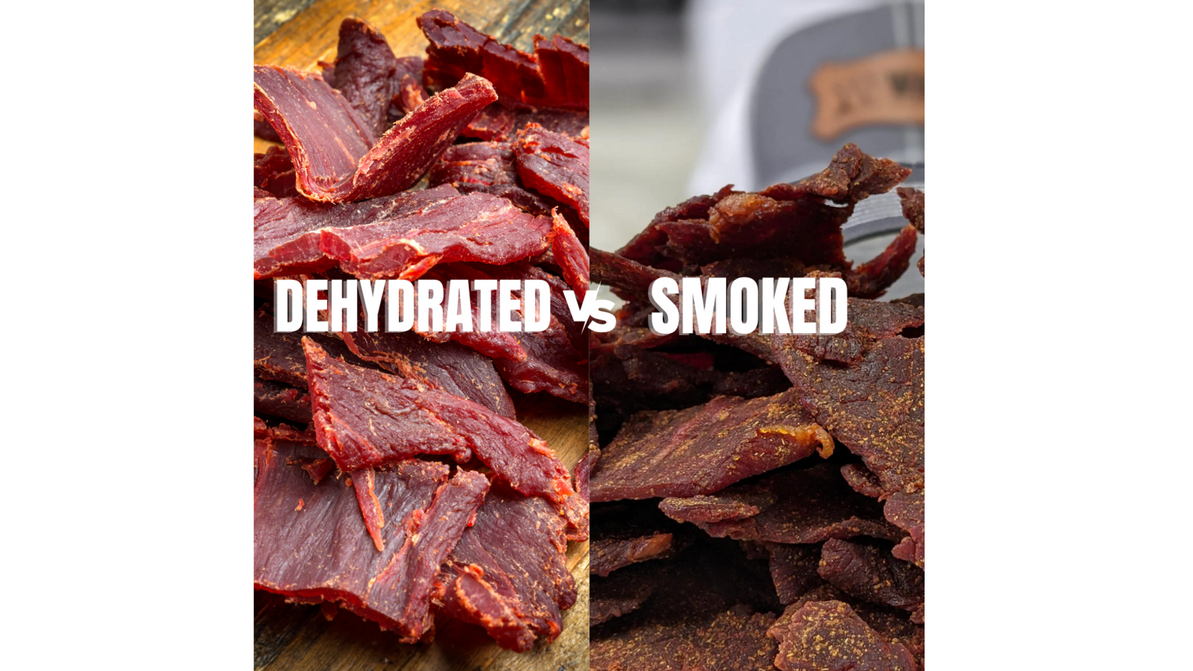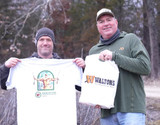Smoked vs. Dehydrated Jerk
The debate continues over the ideal method for cooking and drying jerky. Different ways include cooking in an oven, using a dehydrator, or using a smoker. There are benifits to each method but depending on the equipment you have there are various elements you can control to get the best result. One important factor in cooking jerky is the ability to control and measure the relative humidity. However this requires a smokehouse, so the focus will be on how to create tender jerky in an oven.
The debate continues over the ideal method for cooking and drying jerky. Different ways include cooking in an oven, using a dehydrator, or using a smoker. There are benifits to each method but depending on the equipment you have there are various elements you can control to get the best result. One important factor in cooking jerky is the ability to control and measure the relative humidity. However this requires a smokehouse, so the focus will be on how to create tender jerky in an oven.
Which is Best?
The debate continues over the ideal method for cooking and drying jerky. Different ways include cooking in an oven, using a dehydrator, or using a smoker. There are benifits to each method but depending on the equipment you have there are various elements you can control to get the best result. One important factor in cooking jerky is the ability to control and measure the relative humidity. However this requires a smokehouse, so the focus will be on how to create tender jerky in an oven.
What are the steps for slicing and mixing?
The first step is to slice the jerky into usable pieces. Trim and partially freeze the meat to simplify slicing. Cut against the grain of meat to influence the bit and chewability of the jerky.
Next, mix in the seasoning and cure with the meat. Coat both of the jerky with the seasoning and cure mixture. Once you have coated the pieces, place them in a bag and add enough water to cover the meat. Let the bag sit overnight. This allows the cure to work in the meat and the seasoning to fully penetrate the meat. Using a vacuum bag will help the seasoning penetrate the meat better. This is enhanced by massaging the meat in the bag every few hours to relax the muscle fiber and to allow the seasoning and cure mixture maximum distribution. If using a vacum tumbler, dissolve the seasoning, cure and add other additives with water and add with meat in the tumbler. tumble for about an hour.
Does the process change if I add Sugar?
A crucial part of the mixing process is adding sugar and water. Add 20 percent weight in water and 18 percent in brown sugar. Sugar binds with the water and meat to take away any availablity for microbial growth. To determine this, use a water activity meter. If you don't have a water activity meter, be sure and refrigerate your jerky to ensure its safety. When using brown sugar, be sure to dissolve it in water to avoid making extra sticky jerky. It is also almost always necessary to use some sort of tumbler for this step. Using a vacuum sealed bag does not work as well when using the brown sugar.
What are the differences in smoking and dehydrating?
There are two popular methods to the thermal process of jerky. For the process using the dehydrator, lay out jerky on the jerky screens and cook at 325° until the internal temperature is 160° F. For jerky that has been cut 1/4" it takes about 12 minutes. After reaching temperature move to dehydrator and set it to the top temperature which is usually about 160° F. Keep in the dehydrator until the jerky reaches a shelf stability level around .71. This takes about four hours. When cooking in a commercial smoker pay specific attention to the relative humidity.
| Stage 1 | Stage 2 | Stage 3 | Stage 4 | Stage 5 | Stage 6 |
|
110° F for 20 minutes with no humidity, dampers wide open, and fan on. |
135° F for 30 minutes with no smoke or humidity. |
140°F for 10 minutes with no smoke or humidity. |
150° F for 30 minutes with dampers closed and relaive humidity set to 50 percent. |
155° F for 30 minutes with 50 percent relative humidity. |
175° F with 60 percent relative humidity until internal temperature is 160°. |
Then up the temperature to 155° F for 30 minutes with 50% relative humidity. For the final stage, cook it 175° with a 60% RH until the internal temperature gets to 160°.
Other Equipment and Supplies.
Recent Posts
-
Introduction to Sausage Making
.blog-post-figure{ display:none; } Are you ready to start your journey into the world …12th Apr 2024 -
BHA Clean-Up
Both, Austin and Jon gave back to the hunters' community with their time and hard work in the for …13th Feb 2024 -
Walton's Gift Guide
Christmas is just around the corner, and we're here to let you know what we personally recommend …7th Dec 2023



